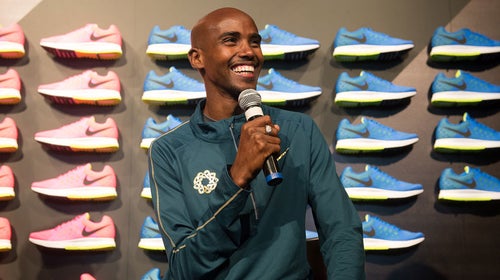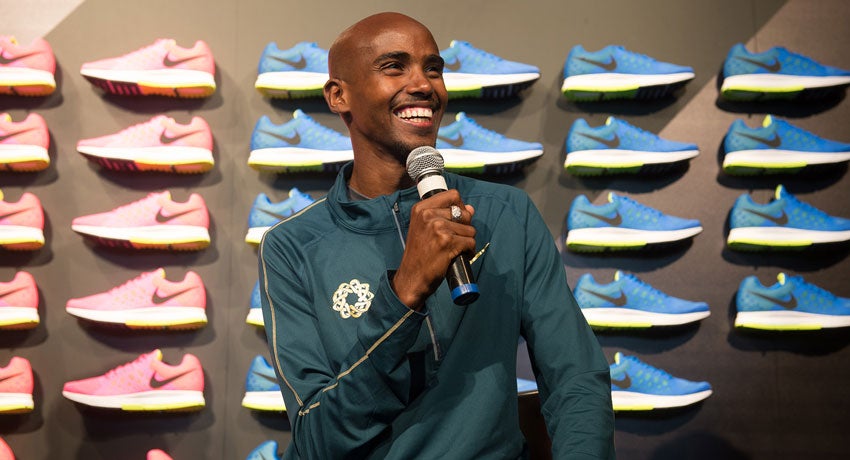Who doesn’t love ? The current Olympic and world champion in both the 5,000 and 10,000 ran a 2:08:21 in the 2014 London Marathon, , and—thanks to his huge smile and wide eyes—inspired one of the.
And now you can run in his shoes.
Well, kind of. This weekend, Nike released the , designed specifically with Farah’s input. “They listen to [elite runners] and work with you,” Farah told reporters at a Nike Zoom media event. “I pretty much wear a neutral shoe, and the Pegasus gives me what I need.”
So what exactly does a world champion require? Keeping in mind that Farah is about five-foot five and 125 pounds, not a lot (although he does wear orthotics). He can get away with much less stability and cushion than many runners.*
Which is why the Pegasus works well for Farah. The 31st iteration of the responsive, lightweight shoe is designed to be a neutral runner’s go-to trainer for high-mileage running.
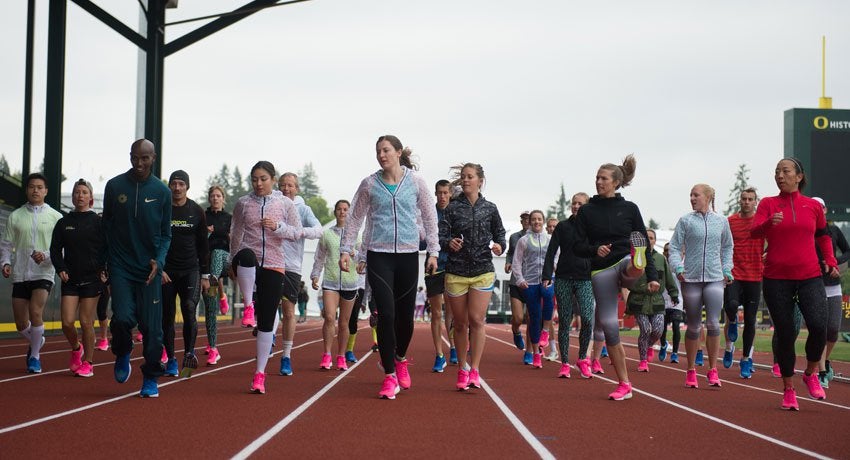
“The Pegasus…just keeps getting better,” Farah says. The improved upper is simple: snug mesh with subtle supportive layers that are built in (instead of stitched on) to reduce weight. The toe box can accommodate wide feet, or just cinch the laces for a more secure fit across narrow feet.
Where this shoe gets just the slightest bit complicated is the sole: Basically, a pocket of pressurized tensile fibers (Nike’s “Zoom Air” unit) in the heel collapses when you land; as you toe off, the fibers snap back and push your foot off the ground. The result is super responsive cushioning, which is particularly awesome if you’re a heel striker.
“I loved that snappiness,” Farah says, “combined with the soft cushioning and protection that I need for my 100-plus miles a week.”
Runners also feel that fast snap off the ground thanks to a 10-millimeter drop sole (lower than previous models) that incorporates a slight curve under the toes to propel through foot strike and toe off. A crash rail down lateral side further aids energy transfer through the toe.
So what’s not to love about this shoe? If you’re a forefoot striker, don’t even bother. The Peg doesn’t do a whole lot to protect the ball of your foot. Same goes for overpronators. No major arch support here. And if you’re looking for a shoe for both roads and trails, keep on looking. The mesh upper is basically a sieve for dust and dirt. A five-mile run on was enough to make fresh-out-of-the-box shoes and socks absolutely filthy—even on a sunny and dry Eugene day.
But, if you’re a neutral runner, possibly with a bit of a heel strike, this is your shoe. Even if you’re not doing 100 miles a week.
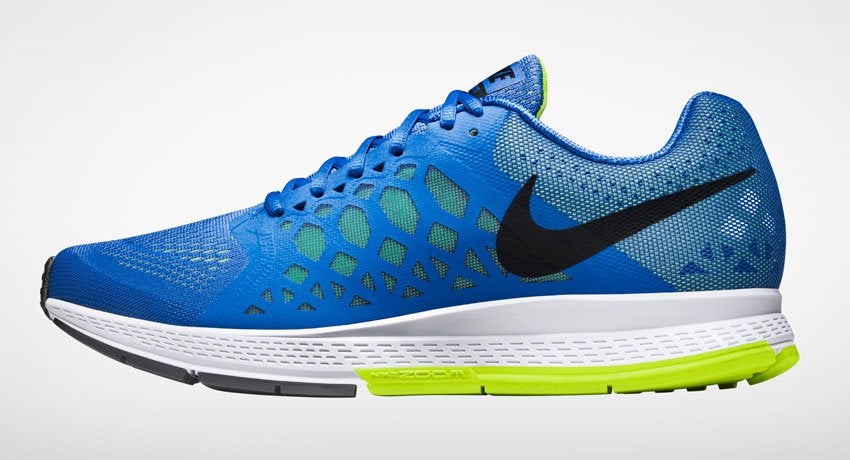
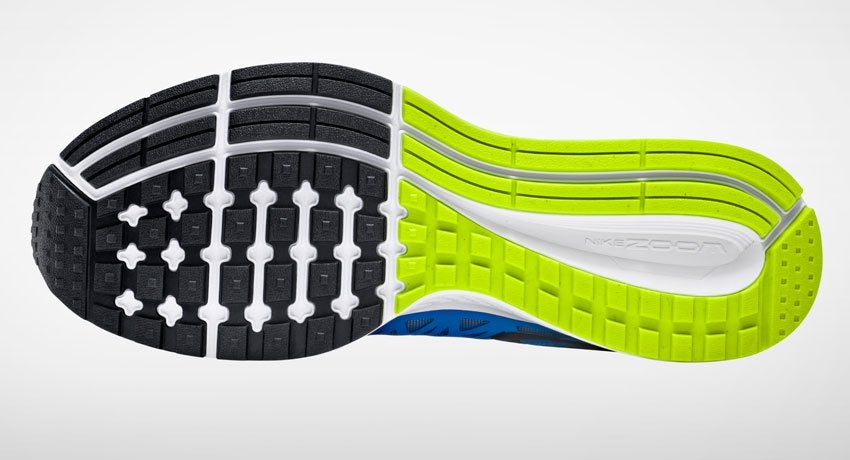
* If you’re a fore-foot striker, try the Nike tempo trainer, which has the air bag in the toe. Overpronators might try the , which incorporates a medial post in addition to Zoom Air in the forefoot and more stability in the heel. Those seeking an even lighter shoe than the Pegasus might like the very minimal racing flat, which is built on a midsole platform with Zoom Air in the heel. (Nike says the Streak has won more marathons than any other she in Nike history.)
